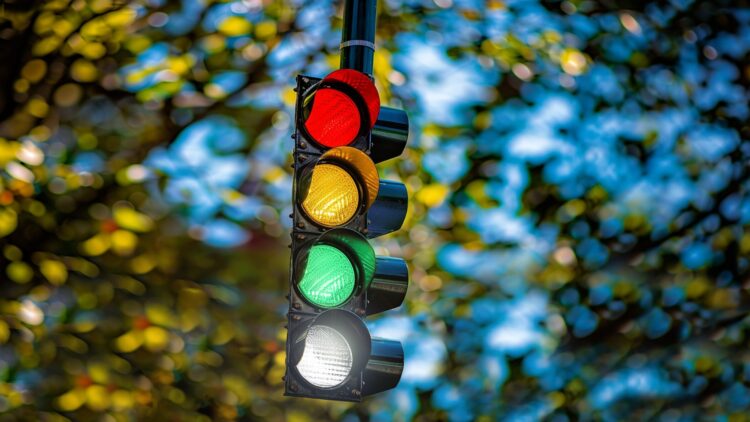It is hard not to recognize the famous red, yellow, and green traffic signals on roads throughout the globe. By 2025, traffic signals may have one of the biggest changes because one more color will be added to them. This shift aims to meet new increases by AVs and redefine the meaning of traffic management to make it safer and more effective in the future. This revolutionary update will change how you interact with your Android device forever. Here’s everything you need to know!
Introducing the white light: The following can be considered a breakthrough in developing purely autonomous cars.
To further illustrate this strategy, we provide the proposed fourth color, white, which would signal to other drivers that the self-driving vehicle is managing traffic conditions. However, unlike the traditional Traffic signals, which inform other motorists of the behavior expected from autonomous vehicles at AIs, the White light informs the human drivers to mimic the behavior of the AVs at AIs. This system leverages the idea that AVs are intelligent vehicles that actively relay information and manage traffic information flow.
In the case the AVs get to an intersection, they communicate with the traffic signals, as well as other AVs, to achieve the best flow. When AVs are in command, a white light informs human drivers what the self-driving vehicles intend to do. This makes it easier for human drivers to decide when to veer in either direction, thus eagles traffic congestion and making the road safer.
Self-Organizing White Lights: How They Will Change the Course of Traffic at Intersections
The function of the white light depends massively on the “vehicle-to-everything” or V2X technique. Self-driving cars will navigate with assistance from their sensors and other communication devices and work like traffic policemen. This innovation aimed to minimize the role of human fallibility and establish a more orderly, requisite traffic flow.
For instance, at an intersection of four approaches full of other cars and pedestrians, AVs will control the traffic depending on vehicle concentration and movement of people. Observing white light, human drivers only have to follow the vehicle in front of them. This saves time that may be wasted due to confusion and congestion that may be spread during busy hours.
How including an additional color to traffic lights is an advantage to the society
The application of the white light is not only for the sake of supporting self-driving cars, but it will also help increase safety and efficiency for every actor. This is because when AVs are given the chance to control traffic during the white light phase, such incidents resulting from human error are prevented. This is important because AVs react more accurately to rules and certain conditions than humans.
traffic pattern would also extensively be enhanced. As opposed to speculative signals, which often lead to vehicle halts that are not needed, AVs act in real-time processes, decreasing traffic. Also, reduced traffic erratic motion achieves a better traffic flow, reducing fuel consumption and environmental emissions.
Subtracting from the advantages, significant challenges seem to occur in trying to implement the white light system worldwide
However, the idea of the fourth color is very reasonable, yet it has difficulties as a regular practice. There is one significant caveat its success requires public understanding and acceptance. One problem is that most drivers could easily get confused by the white light at first if they have never encountered an AV before. This will require increased public sensitization and education and new road signage.
Deriving infrastructure is the other main problem that has been observed. A transition will likely entail considerable capital investments, especially for improving traffic signals to include an additional color to the existing tri-color traffic signals. Governments must decide whether the existing framework can accommodate this technology integration and modify automotive and non-automotive cityscapes.
What this new color adorns for the future of transportation
Introducing the fourth light on Traffic signals is a big step toward developing a complete transport system. This qualitative research suggests that the infrastructure must also develop as the AV technology progresses. The white light signals the start of how roads could evolve in a world dominated more and more by advanced automation.
This innovation could someday revolutionize traffic management by 2025. Symbolically, the white light indicates the future of self-driving cars while simultaneously bringing concern for the mixer interaction of the vehicles and the people.


